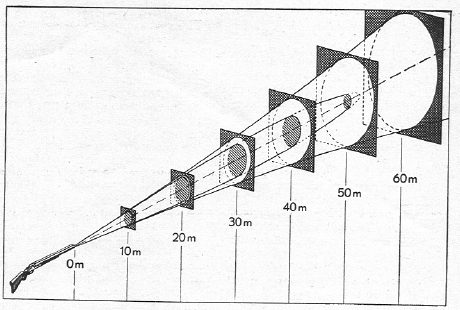


Using A Twenty Gauge for Wild Turkey
The two most asked about topics in shotgunland are patterns and recoil. Though some are dismissive of patterns and pattern testing, the pattern your shotgun produces is the only interaction between you and your target that means anything, whether game or target. Those looking for an easy answer to the “better pattern” are bound to be frustrated, for the “better” pattern does not exist at all ranges, just at one of them. Until the notion of a pattern is connected to a specific range, it doesn't mean anything.
Traditionally, a “better” pattern means a smaller pattern diameter and higher pattern density. That is the case with improving a “cylinder” pattern to improved cylinder, improving a “modified” pattern to improved modified and so forth. Unfortunately, the suggestion of pattern efficiency does not change based on gauge, shot diameter, or payload . . . a “modified” pattern is still a modified pattern whether your payload is 3/4 oz. or 1-3/4 oz. and your shot size is #9 or #2.
The National Wild Turkey Federation has called the “ideal” pattern for turkey hunting as 100 pellets in a 10-inch circle at 40 yards. Whatever science was used for that one is a mystery, for a 40 yard pattern is unimportant if you are taking turkeys at 25 or 30 yards, nor does it help if you feel you need to reach out to 50 yards. The tightest pattern at 40 yards is a distinct negative at close range, a handicap not an advantage, for you have a smaller effective pattern diameter as John Brindle illustrated with wingshooting patterns.

To get the pattern you want, from your individual gun, requires you to decide the range, and the two primary tools you have to work with are interchangeable choke tubes and ammunition choices. Neither choke alone or ammunition alone is going to give you the most satisfying results, it takes two to tango. Trying to rely on one or another is still Laurel without Hardy.
Number 6 lead shot often give the illusion of a higher pattern percentage due to the higher pellet count for the same payload, as does #5 compared to #4. The consideration is that #5 pellets offer better penetration and neck-breaking ability at all ranges compared to #6 pellets, the same is naturally true with #4 vs. #5. It is compromise again, and I've found #5 lead to be the best compromise to 45 yards or so. Lead #4 is a better pellet at long range, but long range is also when you need to start out with more pellets, not less, a Hobson's Choice.
You can of course just screw in an allegedly “Full” OEM choke, blow an ounce of #6 shot out your 20 gauge tube and just call it good to go: people do. There are far better alternatives than that, however, and this brief video should help give you an idea of the wide variation in results from OEM to aftermarket turkey chokes as well as the benefit of using buffered lead turkey loads, or even better: high density shot like Federal Heavyweight #7, that performs better than #5 lead.
Copyright 2014 by Randy Wakeman. All Rights Reserved.

Custom Search



